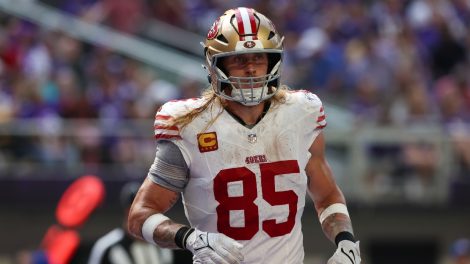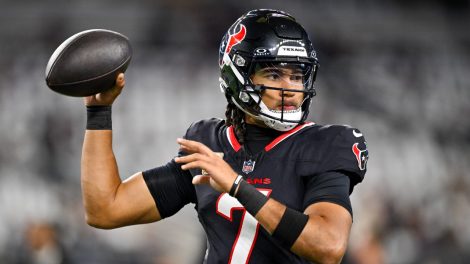If you fail to plan, you plan to fail. This isn’t just the advice my dad gave me routinely about academics and really everything else when I was an adolescent. It’s a cliché that became a cliché because it’s true.
What’s also true is the NFL has failed to put together an adequate plan to address the challenges COVID-19 presents all businesses, including the golden goose of pro sports. And that’s despite the fact they’ve had more time to prep given their season is scheduled to start later in the 2020 sports calendar than any other North American sports league.
But here we are on the doorstep of that season, with training camps scheduled to open on Tuesday, and they’re basically acting like the virus is an off-season nuisance — not a serious ongoing threat.
To date, the NFL’s response has simply been to cancel everything they could. The Hall of Fame Game first — now the entire pre-season. But those cancellations don’t do much to address the regular season, so, in essence, they’ve just procrastinated their problem away rather than dealing with it head on.
On top of cancelling the pre-season, the NFL and NFLPA agreed to limit training-camp rosters to a maximum of 80 players, as opposed to the usual 90. They also decided to limit roster size to help enforce social-distancing measures in team facilities.
If you have to go to that type of measure, maybe it’s a sign your sport shouldn’t be played in the first place.
[relatedlinks]
Other sports have gone with expanded rosters to combat the fact they expect players to be lost due to the coronavirus. However, the NFL appears to be assuming they aren’t going to lose a high number of players — despite taking less drastic measures to protect them.
The MLS, NBA, WNBA and NHL have decided the only way to keep their players safe is through quarantining in a bubble with vigorous testing. But the NFL apparently knows better and has said no to the bubble or hub city concept, which flies directly in the face of advice from Anthony Fauci.
“Unless players are essentially in a bubble — insulated from the community and they are tested nearly every day — it would be very hard to see how football is able to be played this fall,” the director of the National Institute of Allergy and Infectious Diseases told CNN back in June.
Yes, MLB abandoned their bubble plans and are playing in home markets, but they cut their season by 102 games. The NFL has made no such COVID concession and isn’t cutting its regular season at all.
Social distancing also happens largely by default in baseball. Football is the exact opposite. If you play defence, the goal is to take away personal space — not give it up.
The other issue is losing a player due to injury or illness simply isn’t as big a deal to teams in baseball or the other major sports as it is in football. If the two players you lose due to coronavirus happen to be quarterbacks, that impacts the viability of a team’s ability to compete in a way that the loss of two point guards or two pitchers doesn’t.
What if the virus ravages a locker room and takes out five offensive linemen or four defensive backs? The competitive balance of games and the entire season will be in jeopardy.
The low positive test numbers being reported in the NBA and NHL are important because those are baselines before you start the season in the bubble. Once in the bubble, the rate of potential infection should drop dramatically as it’s a sterile environment where everything is provided for the players.
In the NFL, good test results at any point will mean nothing because at the end of the day players will be going back into their communities. They’ll be interacting with family members who won’t be getting vigorously tested. So those NFL case numbers could jump at any moment due to community transmission.
Add it all up, and the sum total of the NFL’s plan seems to be for the virus to just go away and die, and preferably before Thurs., Sept. 10 — when the Houston Texans are scheduled to visit the Kansas City Chiefs for the first game of the season.
But the virus isn’t going to take a knee and give up. In fact, the opposite is happening. The number of confirmed infections has exceed 15 million worldwide. The death toll is above 600,000 globally. And a large percentage of those numbers are from the United States. The U.S. alone has accounted for nearly four million cases and over 142,000 deaths. Now, for the first time since early June, 1,000 Americans are dying every day.
To curtail the spread of the virus, you need to maintain strict protocols — not just washing hands and wearing masks, but also closing certain businesses and placing bans on large gatherings. But instead, we’ve seen the rolling back of measures in the U.S. as many states abruptly reopened despite warnings from public-health officials.
By contrast, social-distancing measures abroad are still so serious that racing fans in Poland rented cranes to watch competition at a speedway because they weren’t allowed inside. Yet in the U.S., a country with significantly more cases per capita, the NFL is entertaining fans in stands?
The NFL has announced it will test daily for the first two weeks of training camp, which is a good start. But the league hasn’t agreed to test daily throughout the year — something players have been adamant about.
While it’s true testing is expensive and NFL owners undoubtedly have an eye on the bottom line in a season where revenues will take a hit, I doubt they’d be proceeding along the same lines if they or their family members were the ones taking the field.
[snippet id=4888368]
Other issues remain unresolved — like the negotiating procedure under which players can opt out of the 2020 season. The league has reportedly proposed stipends for players who opt out by Aug. 1.
The troubling signs aren’t limited to the work left to be done, but the things the league felt prudent to rule on first.
Players can’t swap jerseys post-game. And on the road, players won’t be allowed to go to restaurants outside of their hotel, though they will be able to in their home cities.
But it’s not as if the virus is only a threat on game day.
Testing is one important mechanism to make sure you identify who has the virus, but you also need mechanisms to ensure players don’t contract the virus in the first place.
Meanwhile, the NFL has yet to set a league-wide ban on fans in the stands for games, leaving teams to make the difficult decision on their own. So, first out of the gate, the New York Jets and New York Giants recently announced they won’t have spectators at Met Life stadium:
How are we even still talking about this? How is the NFL’s only mandate regarding live attendance about mandatory masks?
This is all happening at a time when every other major sport has come to the conclusion fans attending games in person is a luxury — not a necessity.
The NFL has been all systems go, full speed ahead — pandemic be damned. Well, sadly, in the U.S., so has COVID-19. And those two facts are why the 2020 season is in real jeopardy before it even starts.








